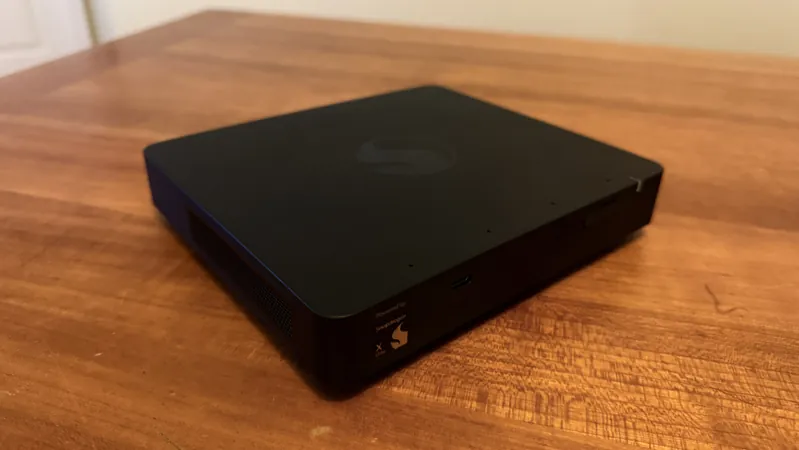
NASA’s Game-Changing "Continuous Heartbeat" Initiative: A New Era in Space Exploration Awaits!
2024-12-21
Author: Yu
Introduction
As the iconic International Space Station (ISS) prepares for its retirement by the end of the decade after nearly 30 years of serving astronauts, NASA is racing to ensure humans remain a constant presence in low Earth orbit. With plans in place for a commercial successor, the agency is not just looking to fill a void but instead to pioneer a new chapter in space exploration that aims for ambitious missions to Mars.
The Continuous Heartbeat Initiative
NASA recently unveiled its final "Low Earth Orbit Microgravity Strategy," which emphasizes the critical need for longer-duration human missions post-ISS. This bold initiative, referred to as the "continuous heartbeat," aims to ensure missions last from six months to a year, addressing the essential preparation required for future trips to Mars. Shorter flights of less than six months are deemed insufficient for effective research and risk mitigation.
Human Involvement and Research Emphasis
The essence of this strategy focuses on human involvement. As documented in NASA's report, the agency is committed to maintaining an "unbroken rhythm of human activity in low Earth orbit." This continuous presence will not only reduce risks as we journey to Mars but will also preserve the vital operational skills needed for complex missions, ensure a steady transportation schedule, and bolster ongoing scientific advancements. Furthermore, it establishes a strong framework for collaboration with commercial and international partners.
Transitioning from the ISS
With plans to decommission the ISS by 2030, the aging space station is destined for a fiery descent into Earth’s atmosphere—an event that symbolically ends a golden era of human spaceflight. In its place, NASA established the Commercial Low Earth Orbit Destinations program in 2021 to encourage private enterprises to build and operate future space stations. Instead of taking on the monumental task of station construction, NASA aims to be a customer, enabling companies to fill in the gaps it will leave behind.
Commercial Partners and Future Missions
Prominent players in this venture, such as Axiom Space, Blue Origin, and Northrop Grumman, aspire to introduce their own stations, although they may not be operational in time to take over when the ISS retires. Hence, NASA’s strategy during this transitional period involves utilizing commercially owned spacecraft for ongoing long-duration missions. The focus will be on scientific research in the unique microgravity environment, as well as human health studies that are crucial for looming missions to the Moon and Mars.
Significance of Microgravity Research
The report emphasizes the significance of microgravity research, stating, "Through the ISS, NASA has demonstrated that microgravity research is critical to advancing both knowledge of ourselves and our planet." As NASA approaches its transition from the ISS to commercial platforms, it intends to leverage these new systems to further governmental research aligned with national objectives—ultimately enhancing economies and improving quality of life globally.
A Diverse Approach to Transportation
A noteworthy aspect of this strategy is the push for a "diversity of providers," signaling NASA's intent to rely on various partners beyond SpaceX for transporting crew and cargo to low Earth orbit. This diversification is crucial as the agency continues to certify Boeing's Starliner program following its recent setbacks.
Conclusion
Overall, the impending retirement of the ISS marks not just an end, but a transformative phase in NASA's approach to space exploration, consolidating partnerships with the private sector to maintain a consistent human footprint in space as we aim for the stars. Will this bold new era of exploration bring humanity closer to its goal of becoming a multi-planetary species? Only time will tell!



 Brasil (PT)
Brasil (PT)
 Canada (EN)
Canada (EN)
 Chile (ES)
Chile (ES)
 España (ES)
España (ES)
 France (FR)
France (FR)
 Hong Kong (EN)
Hong Kong (EN)
 Italia (IT)
Italia (IT)
 日本 (JA)
日本 (JA)
 Magyarország (HU)
Magyarország (HU)
 Norge (NO)
Norge (NO)
 Polska (PL)
Polska (PL)
 Schweiz (DE)
Schweiz (DE)
 Singapore (EN)
Singapore (EN)
 Sverige (SV)
Sverige (SV)
 Suomi (FI)
Suomi (FI)
 Türkiye (TR)
Türkiye (TR)